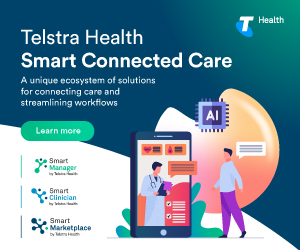3 Barriers to enabling better models of care
In 2017, we saw the healthcare industry under even further pressure and scrutiny, placing the debate around enabling better models of care back in the spotlight.
In this article, we take a look at the infrastructure of healthcare and the three major barriers the industry faces to reach a more optimised outcome.
1. Hours and billing
Over the last few months, out of hours care has come under close scrutiny following a budget blow out. While many suggest the service is vital to the community, others believe it is being used as a loophole for billing non-urgent items at an inflated rate.
There is also talk of restricting urgent billings to doctors who provide regular services, but as noted in this article, 40% of GPs offering regular services don’t consult after hours. The sentiment seems to be that many GPs don’t want to work longer days on top of their already back-to-back office hours.
At the same time, while it’s unsustainable to continue funding out of hours care as is, there is also immense pressure on Australian emergency departments and a strong argument for providing care in other formats. Moving forward, it is vital for the medical profession to work closely with government and the private sector to shape the future of the industry, with a focus on improving sustainability.
2. Telehealth Funding
Telehealth has been touted as having the potential to offer improved access for patients. On the flipside, it offers providers greater flexibility in how and when they deliver care.
However, uptake in primary healthcare is proving a challenge in Australia, and there’s been little investment in researching the potential impacts. In part this may be due to billing restrictions, as Medicare requires in-person consultations.
If funding can shift to accommodate telehealth for specific types of consultations, we may be able to alleviate the some of the pressure on emergency departments and allow more GPs the flexibility to deliver remotely, as and when its required; be it in or out of business hours.
3. Interoperability
Interoperability has been an increased concern in the healthcare industry, and progress to address these issues has been slow – largely due to the sensitivities that go along with health data. We have seen other sectors make the transition, so have the blueprint from which to establish secure data sharing.
At the same time, the combined application of interoperability and telehealth for chronic disease management – one of Australia’s biggest healthcare burdens – is also under investigation. There are promising pilot programs across the country, which have seen hospital readmissions drop as a result of better connected patient care providers; be they a GP, specialist, or other provider of vital care. The combination of telehealth and interoperability make a compelling case for further investigation and consultation.
Again, it’s a matter of industry engaging with government and the private sector to get it right.
It is something that can be achieved and if speculation is right, will help to improve healthcare and productivity outcomes for the sector.
With security and sustainability front of mind, we can develop a framework to deliver appropriate, sustainable care, as and when it’s needed.









